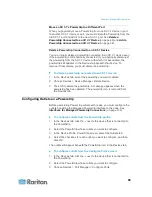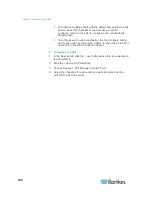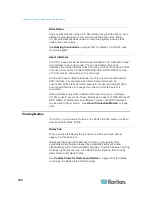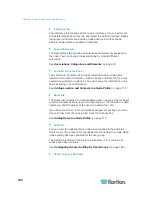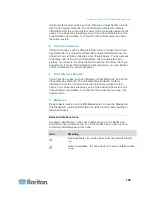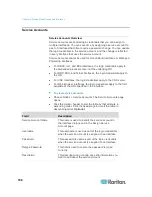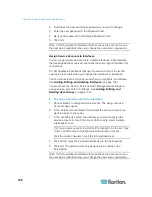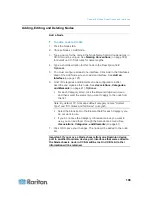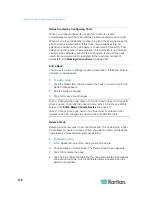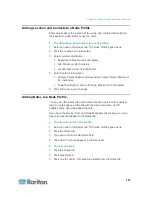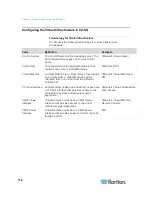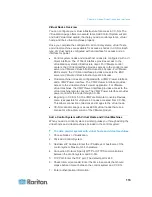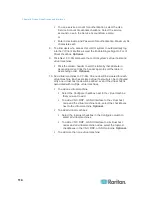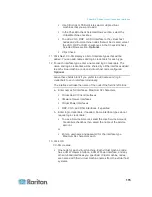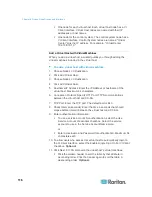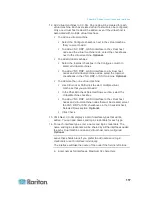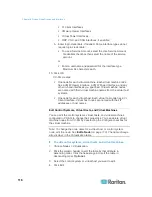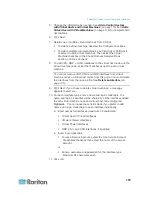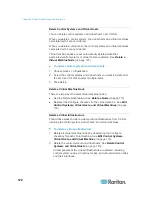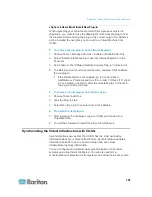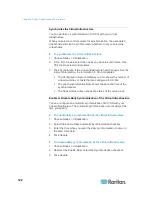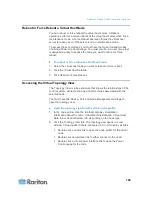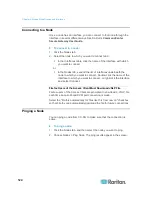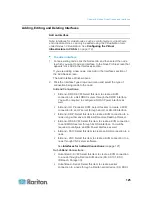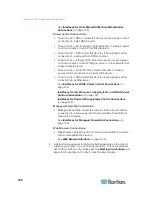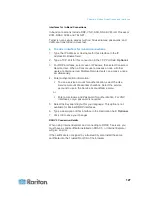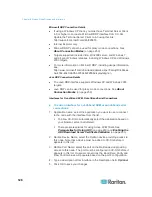
Chapter 8: Nodes, Node Groups, and Interfaces
113
Virtual Nodes Overview
You can configure your virtual infrastructure for access in CC-SG. The
Virtualization page offers two wizard tools, Add Control System wizard
and Add Virtual Host wizard, that help you add control systems, virtual
hosts, and their virtual machines properly.
Once you complete the configuration, all control systems, virtual hosts,
and virtual machines are available for access as nodes in CC-SG. Each
type of virtual node is configured with an interface for access and an
interface for power.
Control system nodes and virtual host nodes are configured with a VI
Client interface. The VI Client interface provides access to the
virtualization system's infrastructure client. For VMware control
centers, the VI Client interface provides access to the control center
server via VMware Virtual Infrastructure Web Access. For VMware
ESX servers, the VI Client interface provides access to the ESX
server via VMware Virtual Infrastructure Web Access.
Virtual machine nodes are configured with a VMW Viewer interface
and a VMW Power interface. The VMW Viewer interface provides
access to the virtual machine's viewer application. For VMware
virtual machines, the VMW Viewer interface provides access to the
virtual machine remote console. The VMW Power interface provides
power control for the node through CC-SG.
Beginning in CC-SG 5.0, the VMWare Remote Console's Devices
menu is accessible for vSphere 4.0 nodes accessed from CC-SG.
This allows connection of devices and images to the virtual node.
CC-SG cannot manage or access ESXi virtual nodes that use a
license for a free-trial version of the VMware product.
Add a Control System with Virtual Hosts and Virtual Machines
When you add a control system, a wizard guides you through adding the
virtual hosts and virtual machines included in the control system.
To add a control system with virtual hosts and virtual machines:
1. Choose Nodes > Virtualization.
2. Click Add Control System.
3. Hostname/IP Address: Enter the IP Address or hostname of the
control system. Maximum 64 characters.
4. Connection Protocol: Specify HTTP or HTTPS communications
between the control system and CC-SG.
5. TCP Port: Enter the TCP port. The default port is 443.
6. Check Interval (seconds): Enter the time in seconds that should
elapse before timeout between the control system and CC-SG.
7. Enter authentication information:

